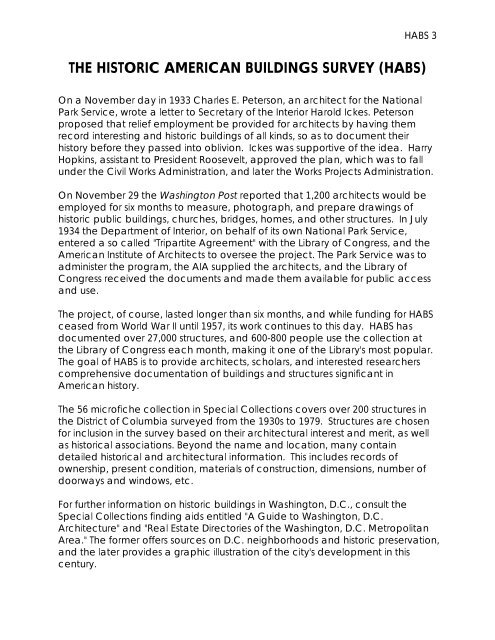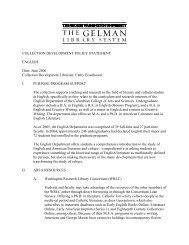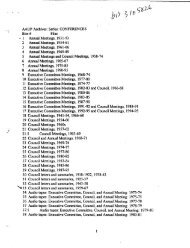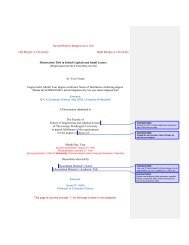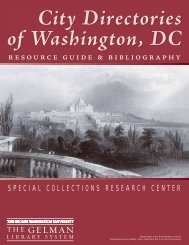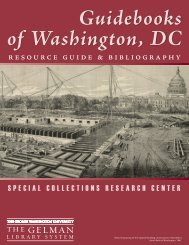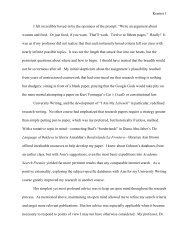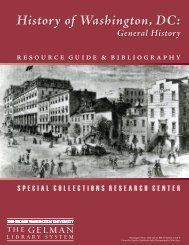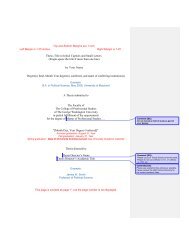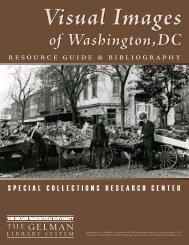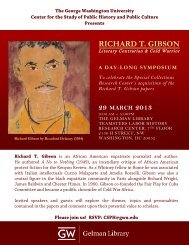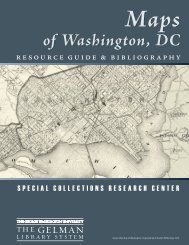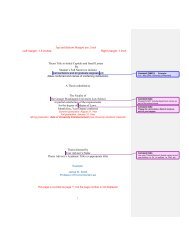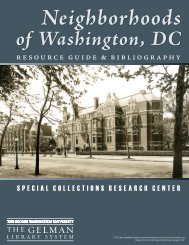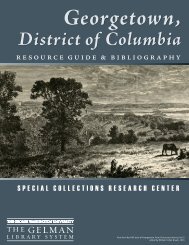Historic American Buildings Survery for Washington ... - GW Libraries
Historic American Buildings Survery for Washington ... - GW Libraries
Historic American Buildings Survery for Washington ... - GW Libraries
Create successful ePaper yourself
Turn your PDF publications into a flip-book with our unique Google optimized e-Paper software.
HABS 3<br />
THE HISTORIC AMERICAN BUILDINGS SURVEY (HABS)<br />
On a November day in 1933 Charles E. Peterson, an architect <strong>for</strong> the National<br />
Park Service, wrote a letter to Secretary of the Interior Harold Ickes. Peterson<br />
proposed that relief employment be provided <strong>for</strong> architects by having them<br />
record interesting and historic buildings of all kinds, so as to document their<br />
history be<strong>for</strong>e they passed into oblivion. Ickes was supportive of the idea. Harry<br />
Hopkins, assistant to President Roosevelt, approved the plan, which was to fall<br />
under the Civil Works Administration, and later the Works Projects Administration.<br />
On November 29 the <strong>Washington</strong> Post reported that 1,200 architects would be<br />
employed <strong>for</strong> six months to measure, photograph, and prepare drawings of<br />
historic public buildings, churches, bridges, homes, and other structures. In July<br />
1934 the Department of Interior, on behalf of its own National Park Service,<br />
entered a so called "Tripartite Agreement" with the Library of Congress, and the<br />
<strong>American</strong> Institute of Architects to oversee the project. The Park Service was to<br />
administer the program, the AIA supplied the architects, and the Library of<br />
Congress received the documents and made them available <strong>for</strong> public access<br />
and use.<br />
The project, of course, lasted longer than six months, and while funding <strong>for</strong> HABS<br />
ceased from World War II until 1957, its work continues to this day. HABS has<br />
documented over 27,000 structures, and 600-800 people use the collection at<br />
the Library of Congress each month, making it one of the Library's most popular.<br />
The goal of HABS is to provide architects, scholars, and interested researchers<br />
comprehensive documentation of buildings and structures significant in<br />
<strong>American</strong> history.<br />
The 56 microfiche collection in Special Collections covers over 200 structures in<br />
the District of Columbia surveyed from the 1930s to 1979. Structures are chosen<br />
<strong>for</strong> inclusion in the survey based on their architectural interest and merit, as well<br />
as historical associations. Beyond the name and location, many contain<br />
detailed historical and architectural in<strong>for</strong>mation. This includes records of<br />
ownership, present condition, materials of construction, dimensions, number of<br />
doorways and windows, etc.<br />
For further in<strong>for</strong>mation on historic buildings in <strong>Washington</strong>, D.C., consult the<br />
Special Collections finding aids entitled "A Guide to <strong>Washington</strong>, D.C.<br />
Architecture" and "Real Estate Directories of the <strong>Washington</strong>, D.C. Metropolitan<br />
Area." The <strong>for</strong>mer offers sources on D.C. neighborhoods and historic preservation,<br />
and the later provides a graphic illustration of the city's development in this<br />
century.


